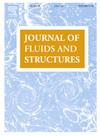悬浮海带养殖场对波浪传播影响的数值研究
IF 3.5
2区 工程技术
Q1 ENGINEERING, MECHANICAL
引用次数: 0
摘要
悬浮藻养殖场作为一种环保的减波方法,在保护海岸线和海洋工程构筑物方面具有巨大的潜力。为了分析悬浮海带养殖场周围的波场特征,采用非流体静力模型建立了三维数值波槽。海带模型是根据欧拉-伯努利定律的原理建立的。研究了波浪周期、海带叶片密度和长度以及叶片固定端到水面的距离对悬浮海带养殖场周围波场的影响。研究结果表明,悬浮海带养殖场能有效地衰减波高,并在其下游形成低波高的梯形区域。不同波周期对波的衰减效果有显著差异,当波周期从7 s增加到10 s时,背风侧最小透射系数减小0.36。海带密度的增加和海带叶片长度的增加都降低了遮蔽区域内的平均波高,并引起更明显的波反射和衍射。然而,庇护区域的大小略有减少,特别是在海带密度较高的情况下。本研究可望为海带养殖场的布局和选址提供有效的指导。本文章由计算机程序翻译,如有差异,请以英文原文为准。
Effects of the suspended kelp farm on wave propagation: A numerical study
As an environmentally friendly wave attenuation method, suspended kelp farms show great potential in protecting coastlines and marine engineering structures. To analyze the wave field characteristics around the suspended kelp farm, a three-dimensional numerical wave tank is established using the non-hydrostatic model. The kelp model is developed following the principles of the Euler-Bernoulli law. The effects of wave period, kelp blade density and length, and the distance from the fixed end of the blades to the water surface on the wave field around the suspended kelp farm are studied. The findings indicate that the suspended kelp farm can effectively attenuate wave height and form a trapezoidal area with lower wave heights downstream from it. The wave attenuation effect varies significantly with different wave periods, and when the period increases from 7 s to 10 s, the minimum transmission coefficient on the lee side decreases by 0.36. The increases in kelp density and the length of kelp blades both reduce the average wave height within the sheltered area and cause more noticeable wave reflection and diffraction. However, the size of the sheltered area slightly decreases, especially with higher kelp densities. This study is expected to provide effective guidance for the layout and site selection of suspended kelp farms.
求助全文
通过发布文献求助,成功后即可免费获取论文全文。
去求助
来源期刊

Journal of Fluids and Structures
工程技术-工程:机械
CiteScore
6.90
自引率
8.30%
发文量
173
审稿时长
65 days
期刊介绍:
The Journal of Fluids and Structures serves as a focal point and a forum for the exchange of ideas, for the many kinds of specialists and practitioners concerned with fluid–structure interactions and the dynamics of systems related thereto, in any field. One of its aims is to foster the cross–fertilization of ideas, methods and techniques in the various disciplines involved.
The journal publishes papers that present original and significant contributions on all aspects of the mechanical interactions between fluids and solids, regardless of scale.
 求助内容:
求助内容: 应助结果提醒方式:
应助结果提醒方式:


